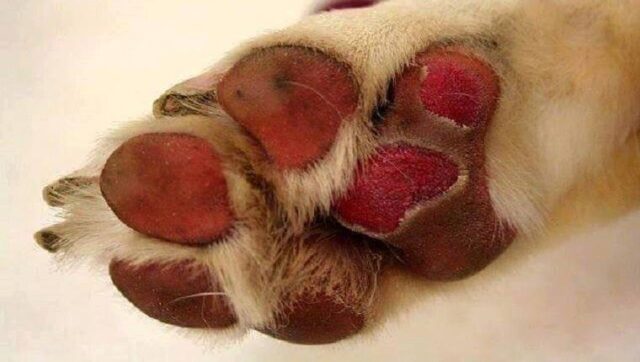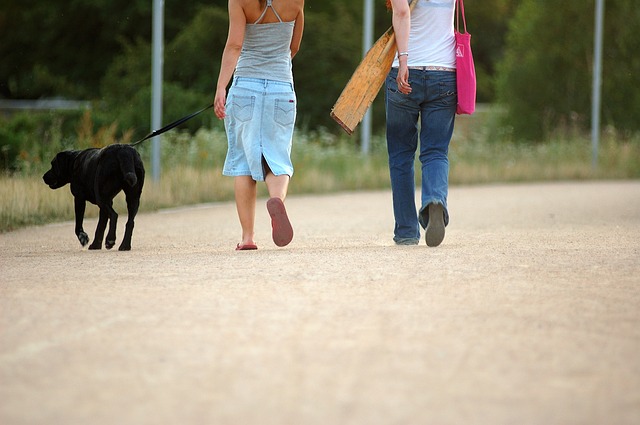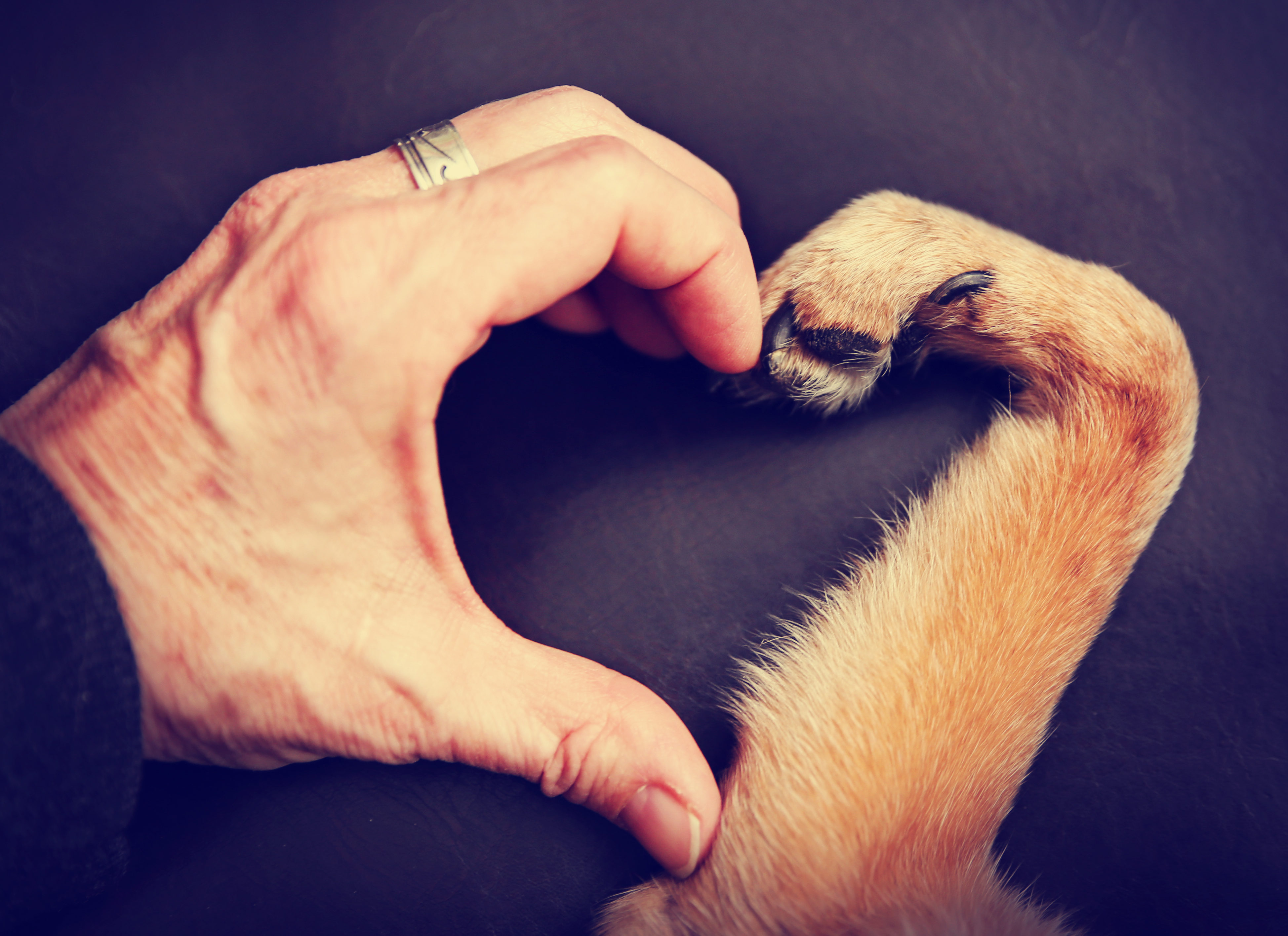Warning: Medical image of burned paw pads below.
June 21 is the first official day of summer, and with the U.S. already reporting record high temperatures, it looks like we are in for a hot one!
Along with the risks of heatstroke and the dangers of hot vehicles, there is yet another hazard dogs face during the hotter months – scorched paw pads.

On each paw, dogs have four digital pads (one for each toe), one large, heart-shaped metacarpal pad, and an elevated carpal pad located at the wrist joint. Some also have small pads associated with their dew claws.
A thick layer of fatty tissue within each pad helps insulate the inner foot tissues from extreme temperatures, similar to a whale’s protective blubber.

While the pads of your dog’s feet are built tough to withstand changing temperatures and rough terrain, extreme conditions can wreak havoc – especially if your pooch spends most of his time indoors.
According to Greg Hammer, DVM, former president of the American Veterinary Medical Association, the pads of dogs exposed to harsh walking conditions will toughen over time, but the paws of pampered pups are much more tender.
“Dogs have some sensitivity to hot and cold but they build up a tolerance much quicker than we do,” Dr. Hammer says. “If you have an inside dog and you never walk that dog on hot streets, they are going to blister or ulcerate their feet. It would be just like if we went without shoes.”

Rather than walking along the street or sidewalk, choose grassy areas which tend to stay cooler. Dead grass, sand, dirt and wood can also be uncomfortable for your pup’s paws if it is hot enough. If these surfaces are unavoidable, walk first thing in the morning or in the evening to beat the heat.
Before your pooch places his paw on the pavement, try the 5-Second Test. Simply place the back of your hand on the walking surface. If you cannot comfortably hold it there for at least five seconds, it is too hot for your dog to walk on.
According to the Pet Safety team at PetSmart, dogs with burned paw(s) may:
- Limp or avoid walking
- Lick or chew feet (may also be a sign of allergies or anxiety)
- Have darker colored paw pads than usual
- Have visibly damaged pads
- Have blisters or redness
If you suspect your dog has burned paw pads:
- Bring him inside right away – carry him if necessary
- Flush the feet with cold water or use a cold compress
- Do not let your dog lick the injured pad(s)
- See your vet as soon as possible – your dog might need antibiotics or pain medication depending on the severity of the burn

Heat damage to two or more paws can essentially leave your dog temporarily handicapped – not to mention bored and miserable – during the healing process. Protect his paws from uncomfortable burns and blisters by:
- Performing the 5-Second Test before each walk
- Checking your dog’s paws after each outing
- Fitting him with breathable mesh booties
- Spreading paw wax on the pads before walking
- Keeping the pads healthy and moisturized year-round to prevent cracking and peeling
 Toledo, United States.
Toledo, United States.